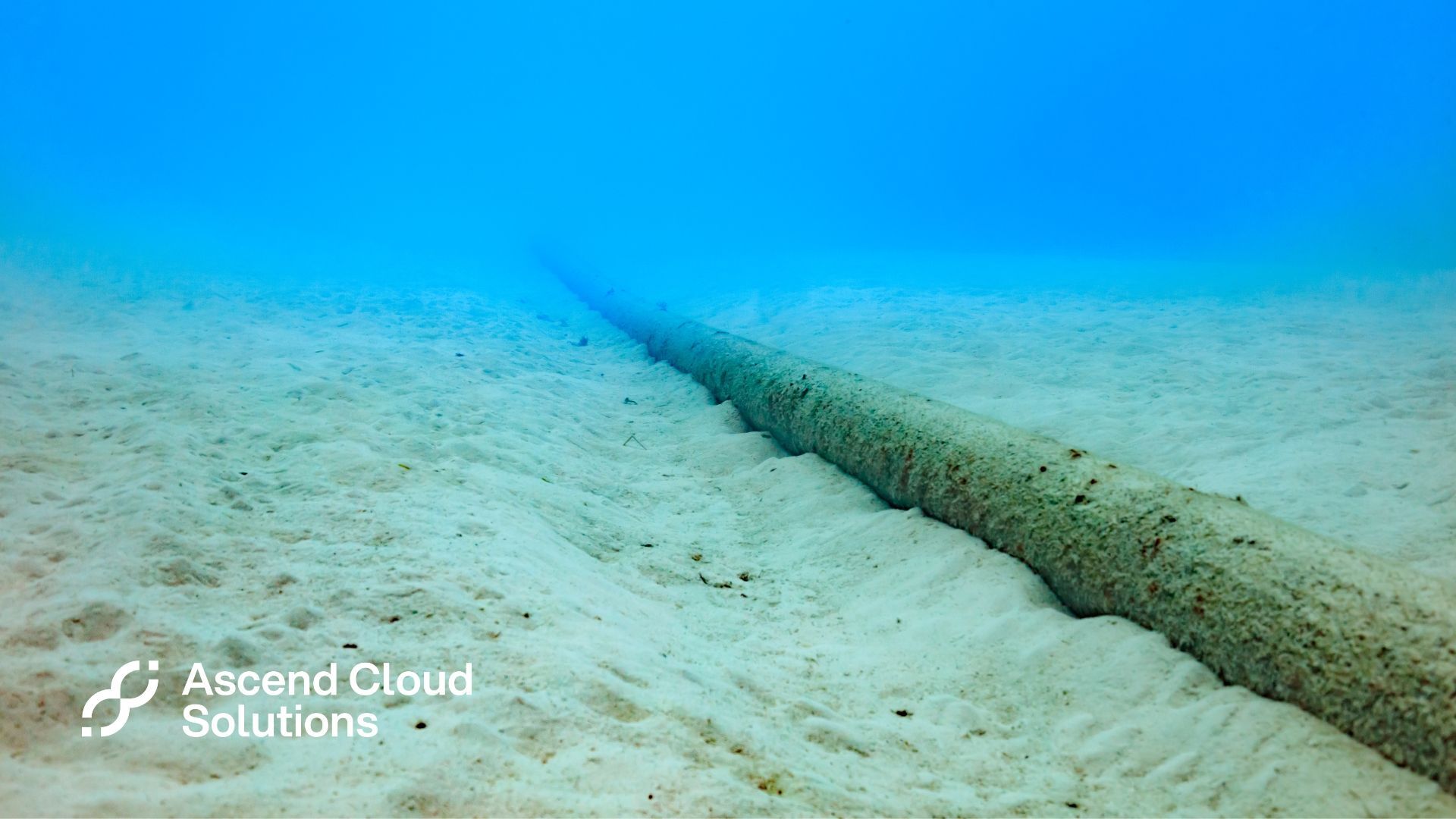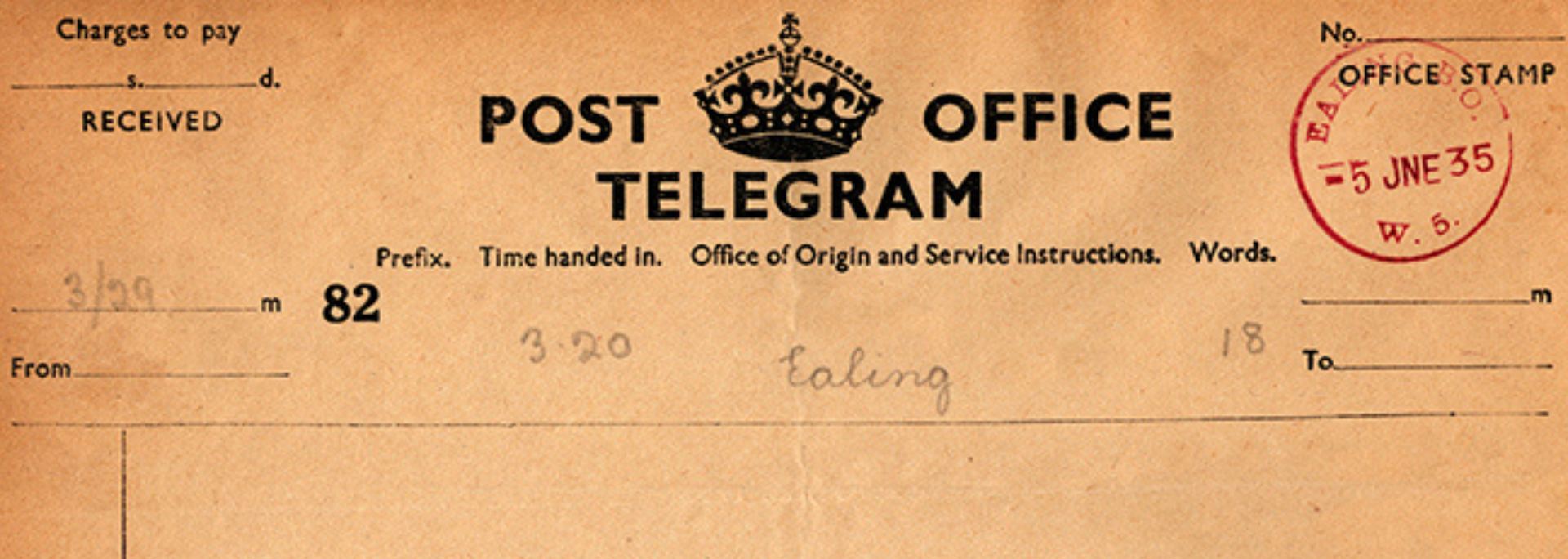The cloud lives in the sea, actually
Where does the cloud live? You might be surprised to learn that most of it is under the sea, actually

In the British sitcom The IT Crowd, the head of IT is getting ready for her employee of the month speech. IT technicians Moss and Roy decide to play a prank on her.
They give her a small black plastic box with a tiny red light on top for her to present at her speech. This, they tell her, is the internet.
The joke is on Jen's naivety, of course. But it's also on the fact that "the internet" is at once ubiquitous and strangely unknowable. Even the most prolific internet user might struggle to answer the question: what
is the internet, exactly?
The same goes for the cloud. Most of us interact with the cloud every day of our lives, whether we're logging into Gmail or streaming a show on Netflix. We know it lets us use services in any location at any time – all you need is login details and an internet connection.
And most of us know that the cloud is run on data centres: the multitude of servers worldwide that store and share data and applications. The internet without a data centre is like a bicycle without a wheel.
But not many people know that the cloud lives in the sea, actually.
Yes, far below the waves, in a salty kingdom of oceanic life and human junk, miles of cables are transferring packets of data from continent to continent. Laid directly on the sea bed, they're now as essential to modern life as motorways and pylons.
Jayne Stowell, who oversees the construction of Google's undersea cables, puts it like this: "People think that data is in the cloud, but it's not. It's in the ocean."
In this article, we take a deep dive into the subsea world of the cloud.
How subsea cables connect continents
In 1858, Queen Victoria sent US President James Buchanan a telegram. It was the first telegram to be sent from Britain to the United States – and it took about 17 hours to get there.

These telegraphic cables have long since been decommissioned and now lie unused on the ocean floor. They've been replaced by around 400 internet cables. Laid end to end, these would stretch almost 750,0000 miles – that's 30 laps of the Equator!
This network of cables is owned by various organisations and private investors that pool resources to maintain the infrastructure.
Or, at least, that's how it usually goes. But in January 2024, Google announced that it's building Humboldt: a subsea cable route that will directly connect South America and Asia-Pacific for the first time.
What are they made of?
Each cable is about the thickness of a garden hose. It consists of a bundle of super-fine wires sheathed in steel wires and a copper case. Materials such as plastic and tar are added for extra protection.
This protection is essential for the cables to work properly. It's not just that they're operating under tonnes of seawater. They're also buffeted by currents, rock slides, earthquakes and even fishing trawlers.
Installing a cable takes years and costs millions of dollars. They're laid directly onto the seabed in deep water – the deeper the better.
The Marea cable, for instance, is 4,000 miles long and has the weight of 34 blue whales. It took a month to load onto a ship and two years to lay in its entirety.
Once installed, a subsea cable acts as a kind of delivery chute for data. Emails, texts and other types of data get fired down these cables at great speed. And we mean
great speed – nearly the speed of light!
Like much of today's digital infrastructure, these cables can boggle the mind if you think about them for too long. But in principle, they're no different from any other technology that carries information across large distances – a freight train, say, or a packet ship of old.
How strong are subsea cables?
Subsea cables are integral to the digital economy and our digital lives. But they're also vulnerable to damage. Somewhere between 100 and 150 cables across the world are cut every year.
This can be because of natural causes. In 2021, for instance, Hurricane Sandy caused $71 billion in damage. It took out, among other things, a subsea cable that linked the USA and Europe.
Then there are earthquakes and landslides. In 2006, a magnitude-7.0 earthquake severed eight cables, affecting internet connectivity in China, Hong Kong, Japan, Korea, the Philippines and Taiwan.
However, natural causes aren't the main source of damage to subsea cables. Two-thirds are caused by human activities – predominantly fishing and other marine activity, but also hostile actions by nation-states.
Cables have long been a target in international conflicts. In the First World War, for example, Britain cut German cables. If a cable was severed today, however, the consequences could be much more severe, impacting citizens, businesses, public services and governments.
Most of the time, however, data is spread over different routes. Like failover in cloud computing, we're not reliant on a single cable. Severance can cause disruption, but this is usually short-lived as data gets redirected down another cable.
Are subsea cables affecting marine life?
Like shipwrecks and other human additions to the sea floor, subsea cables are often used as shelter by marine bottom-dwellers. Think anemones, sponges, crabs and urchins.
It's unclear, however, whether the electromagnetic fields generated by these cables are affecting these animals – especially those that rely on electric fields to hunt for food.
Subsea cables have been shown to cause habitat damage and loss – and they may have a long-lasting impact on marine environments.
Like the cloud in general, subsea cables are an indispensable part of our lives – but they bring with them environmental risks that need to be mitigated.
Based in Cork, Ireland, Ascend provides
cloud-based computing solutions to a global portfolio of clients. Need help to accelerate your ambition?
Get in touch
with our experts to get the ball rolling.












